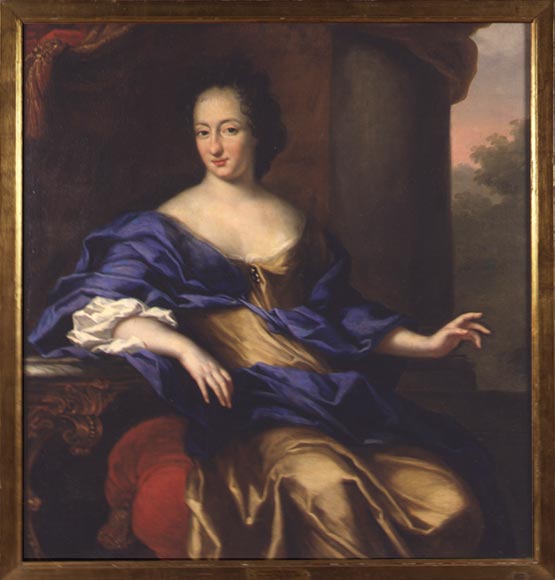- Ulrike Eleonora of Denmark
Infobox Swedish Royalty|majesty|consort
name =Ulrike Eleonora of Denmark
title =Queen consort of Sweden

caption =Ulrike Eleonora byDavid Klöcker Ehrenstrahl
reign =1680-1693
spouse =Charles XI
issue =Hedvig Sophia, Duchess of Holstein-Gottorp
Charles XII
Ulrika Eleonora
issue-link =#Family
issue-pipe =Among others...
royal house =House of Holstein-GottorpHouse of Oldenburg
styles ="HM The Queen Dowager
"HM" The Queen of Sweden and Norway
"HM" The Queen of Sweden
"HRH" The Duchess of Södermanland
father =Frederick III of Denmark
mother =Sophie Amalie of Brunswick-Lüneburg
date of birth =birth date|1656|9|11|mf=y
place of birth =
date of death =death date and age|1693|7|26|1656|9|11|mf=y
place of death =|Ulrike Eleonora (11 September 1656 - 26 July 1693) (the name "Ulrike" is a Danish version of the name, in Swedish she is called Ulrika Eleonora den äldre, which in English means Ulrika Eleonora the Elder), was the daughter of King
Frederick III of Denmark and his wife QueenSophie Amalie of Brunswick-Lüneburg . OnMay 6 ,1680 , she married to KingCharles XI of Sweden . She had seven children, of whom only three survived her, a son Charles, and two daughters, Hedvig Sofia and Ulrika Eleonora.Queen Ulrike Eleonora is in Sweden often called "the elder" to separate her from her daughter, the future queen regnant. She was promised to Charles XI very young. During the
Scanian War between Denmark and Sweden 1675-1679 she was encouraged to break the engagement, and was even considered as a possible wife by the Holy Roman Emperor, but she refused to break the engagement. She gained a reputation for exhibiting kindness to Swedish prisoners during the war.Life as queen
Ulrike Eleonora was described as beautiful and kind and was received with enthusiasm by the king and among the commons in Stockholm and Sweden, mainly because she was seemed upon like a hope for peace between the two countries. According to legend, her husband was never unfaithful to her, which was unusual for a king during this era; when he died, he told his mother he had not been happy since his wife died. However, he was also said to have been by nature cold and unable to show her the love he felt for her, and above all, he was forever under the strong influence of his mother,
Hedwig Eleonora of Holstein-Gottorp , who never surrendered the position of queen to her daughter-in-law. While the suspiciousness between Denmark and Sweden caused by theScanian War still remained, Hedwig Eleonora (and also the Government) was never fond of the son's idea to marry a Danish princess. To please them and show that she had no influence over him, the king always simply referred to Ulrike Eleonora as "My wife" and called his mother "The Queen". As another sign of her low status the foreign ambassadors, when paying their respects to the members of the Royal family, always visited Hedwig Eleonora first, and then Ulrike Eleonora. Under the shadow of her mother-in-law, she was never happy and with ease with her life in the court. Her private family life with the king and her children is on the other said to be very happy. Her most enjoyable moments where when her brother-in-law and sister the duke and duchess ofHolstein-Gottorp came to visit, and the days when she and her husband and children visited the more simple, more modern and rural palace Karlberg that her husband used as a relaxation place; here she enjoyed a simple life away from the court, and developed an interest in painting. She was also interested in theatre and dance, and performed plays with the ladies at court; among the nobles participating in her amateur-performances were the famous beautyAurora Königsmarck with her sister.She once tried to get some political influence over her husband. During 'The Great Reversion' to the Crown of
counties ,baronies and largelordship s from the nobility (most of them richly given away by Queen Kristina), she tried to speak on the behalf of the people whose property was confiscated by the government, but the king simply told her that the reason he had married her was not that he wanted her political advice. She then quietly helped the most poor people whose property had been confiscated by secretly compensating them economically from her own budget. She was most known for her great activity within charity; she founded a large number of orphanages, poor-houses, work-houses, widow-houses, schools to teach poor people professions and other such institutions, and in that aspect, she had some political influence in society.In 1690, she had grown in her husband's mind and he named her as possible regent if he should die during his son's minority, but her health declined due to frequent childbirth and she died three years later. She was completely in the shadow of her husband's mother, and is remembered in Swedish history mostly for this sad fact. Only after her death, her husband referred to her as Queen.
Family
Seven children (three surviving):
#Hedvig Sofia, later Duchess ofHolstein-Gottorp (1681-1708)
#King Charles XII (1682-1718)
#Gustaf (1683-1685)
#Ulrik (1684-1685)
#Fredrik (1685-1685)
#Carl Gustaf (1686-1687)
#Queen Ulrika Eleonora (1688-1741)Ancestors
Ancestors of Ulrike Eleonora of DenmarkReferences
* Herman Lindqvist (2006). Historien om alla Sveriges drottningar (in Swedish). Norstedts Förlag. ISBN 9113015249.
* Lindqvist, Herman. Storhet och fall. Sweden: Bokförlaget Pan, 2000 (1997). Vol 4 of Historien om Sverige. 10 vols. 1992-2002. ISBN 9172630922.
* [http://sv.wikipedia.org/wiki/Ulrika_Eleonora_av_Danmark Swedish Wikipedia article 'Ulrika Eleonora av Danmark']
* "Ulrika Eleonora". vol 13 of Bra böckers lexikon. (ed. Jan-Öjvind Swahn). 25 vols.Bokförlaget Bra Böcker AB, 1986.
* http://runeberg.org/sqvinnor/0427.htmlSucession
Wikimedia Foundation. 2010.
